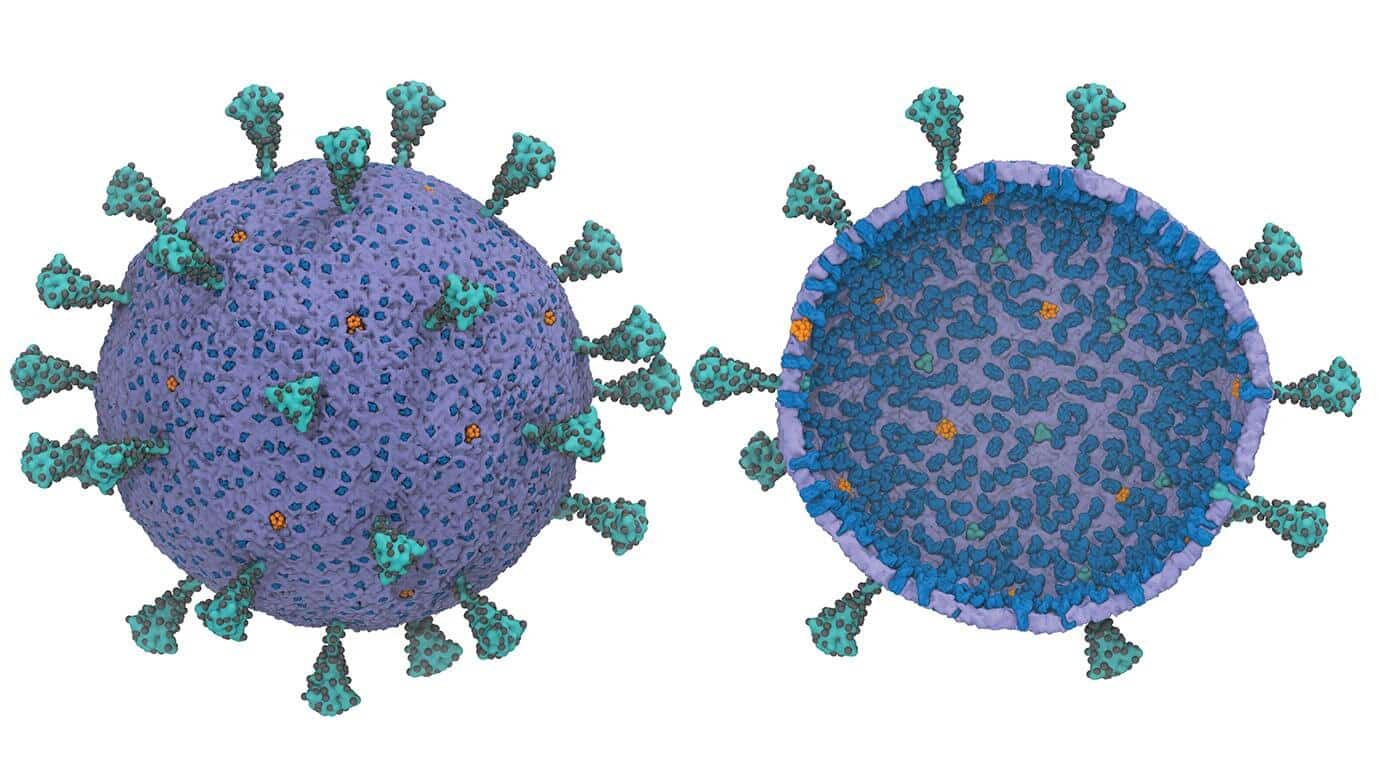First Computational Model For Coronavirus
Scientists from the University of Chicago have developed the first applicable computational model of the whole virus contributing to COVID-19 and the research team is making this globally accessible to expedite the research progress amidst the outbreak.
Prof. Gregory Voth, team head of the project, stated that if one knows the mechanism of the coronavirus, that is the fundamental step in preventing further infections. Each and every aspect related to the virus such as its composition and life cycle are strong weak points, which can be targeted to control the infection. Their study findings were issued in the Biophysics journal.
Voth and his team made use of their previous experience to find the most vital feature of each specific part of the coronavirus and drop the “less crucial” details to develop a computational model that is extensive yet still viable to operate on a computer system. This method pioneered by Voth and his team is called coarse-graining.
The simplified structure assists resolve a vital concern in health research: Although virus being a simple entity, computational modeling is yet a difficult task-particularly if the target of modeling is interactions of the virus and its host, which would contribute
to over a billion atoms.Voth claimed that one can attempt operating an atomic model of the original complete virus, however computationally it would get blocked immediately. A person might be able to handle it just till modeling is done, about a few 100 nanoseconds worth of action, nonetheless that is not actually adequate for finding out the most beneficial details.
Hence, several scientists have concentrated on devising models of each distinct proteins of the coronavirus. However, Voth mentioned that while this fragmented process has its merits, it likewise misses part of a larger story.
Haig P. Papazian, distinguished service professor of chemistry & Voth, a computational researcher reported that the virus itself is a whole thing. According to his opinion, one can’t assume to look at separate components distinctly. Viruses are beyond the added outcomes of their individual parts.

Voth asserted that his laboratory has been operating for several years to model other viral entities like HIV. From all this experience, one of the important concepts they have understood is that several individual components of the virus collaborate and work in unison.
For instance, researchers may explore a drug that attaches to the coronavirus’s spike proteins to avoid them binding to the cells of the host. Voth claimed that one of the vital aspects a person want to know is whether you have to dose every single protein spikes for it to actually be effective. Otherwise, what is the lowest percentage for you to get away with? This is an important concern when one is attempting to make antibodies or drugs, and it is something one can ideally perceive by observing the whole virus.
The model likewise offers a framework to which researchers can incorporate extra details regarding the SARS-COV-2 virus as and when new explorations are completed.
Voth anticipates that the computational model will prove valuable for designs drugs against coronavirus and learning alteration may arise like the variation recently found in the UK. Any person can access the model and utilize it for their research purposes.
Voth reported that designing a multiscale model of the entire virus and incorporating all these details quickly is quite a big technological step. He is really proud of his lab. They have accomplished this project in a record time of a few months. He hopes that if there is an escape for this outbreak, then their tools can be employed to combat viruses more powerful like the ones causing COVID-19, HIV, and any variant of the coronavirus which may emanate in the future.
First Computational Model For Coronavirus






























